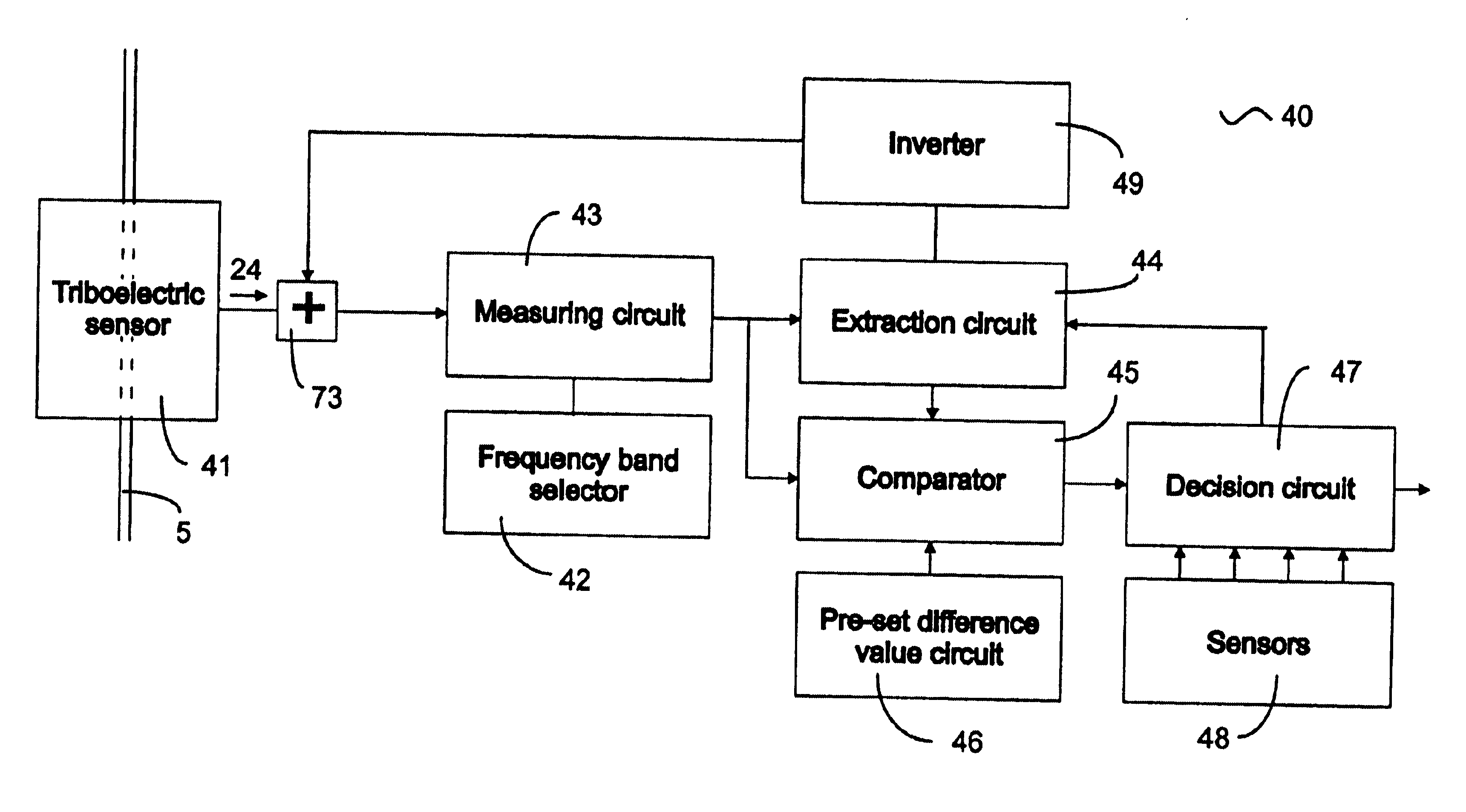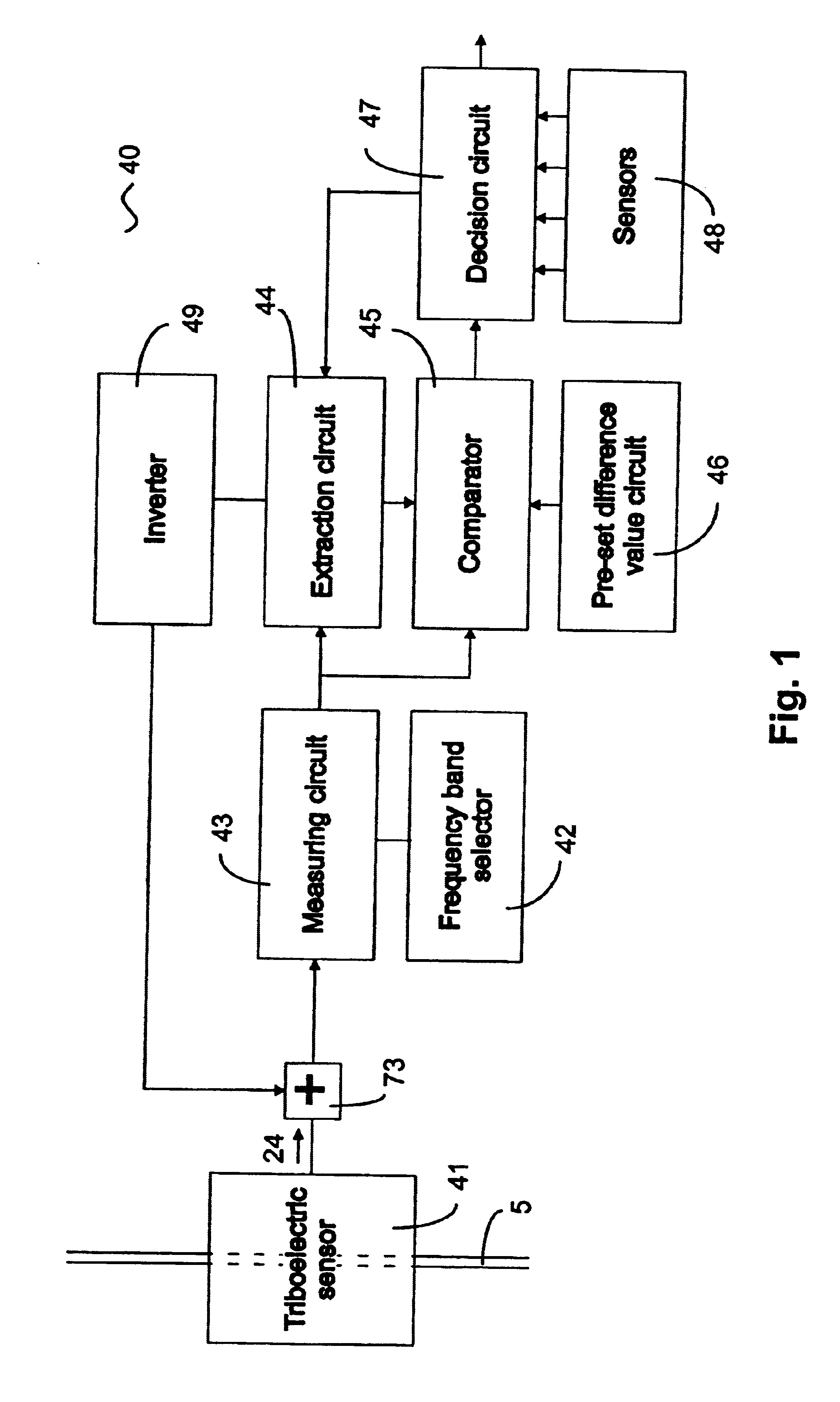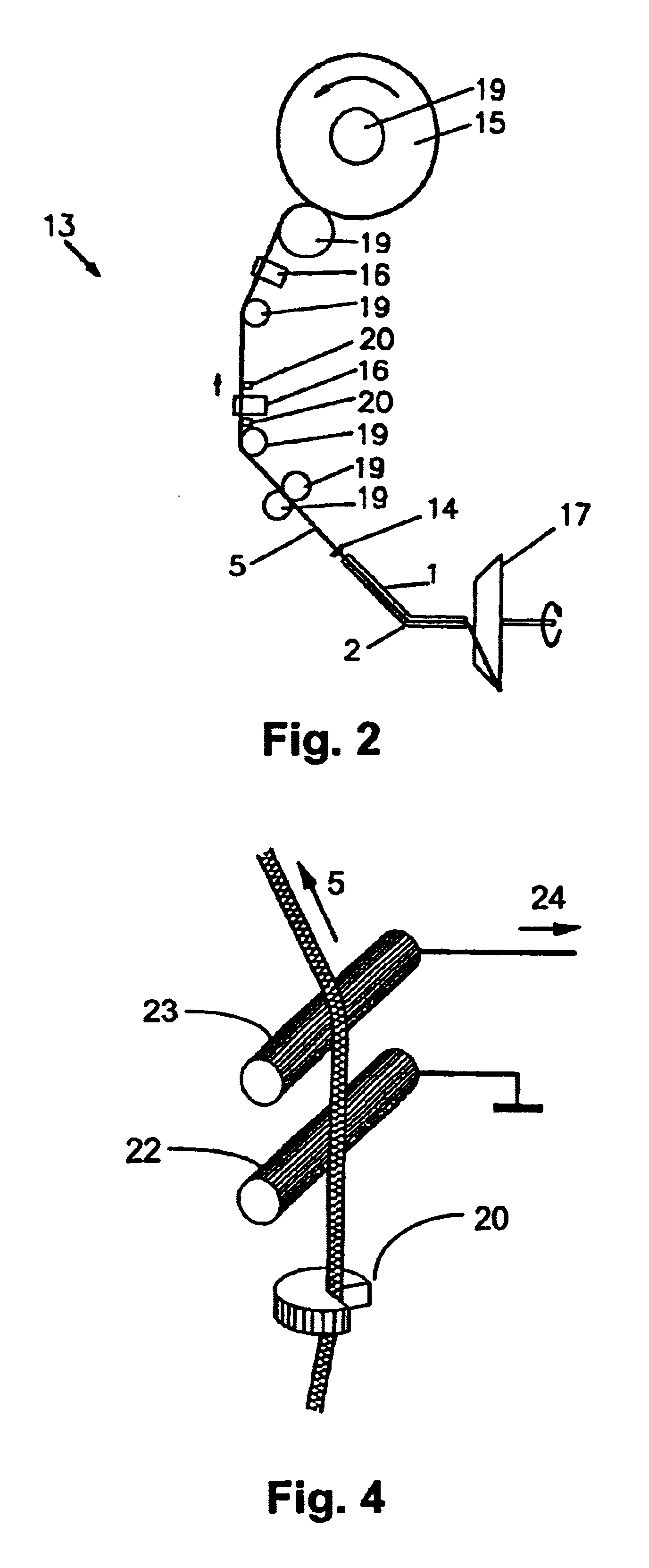Method and apparatus for the detection of foreign materials in moving textile materials
a technology for textile materials and detection methods, applied in the direction of instruments, tension measurement, force/torque/work measurement, etc., can solve the problems of unreliability of triboelectric testing of different materials, source of unreliability and variability in measurement results
- Summary
- Abstract
- Description
- Claims
- Application Information
AI Technical Summary
Benefits of technology
Problems solved by technology
Method used
Image
Examples
Embodiment Construction
The present invention will be described with reference to specific embodiments and certain drawings but the invention is not limited thereto but only by the claims.
A particularly difficult type of foreign matter which is preferably removed from slivers, threads or yarns is the inclusion of thin white polypropylene (PP) strips into cotton. These fibres originate from the packing bags used to transport the cotton and the strips are typically 10 mm to 50 mm long or longer and about 0.1 mm wide. They often are first noticed in the dyeing stage at which time they appear as white faults as they do not absorb the dyes used for cotton. The PP strips may be wound around the circumference of the yarn or may be laid-in longitudinally. Despite many attempts it has not been possible to entirely remove this form of contamination.
A first embodiments of a foreign material detector 40 in accordance with the present invention will be described with reference to FIG. 1. A triboelectric sensor 41 is pr...
PUM
 Login to View More
Login to View More Abstract
Description
Claims
Application Information
 Login to View More
Login to View More - R&D
- Intellectual Property
- Life Sciences
- Materials
- Tech Scout
- Unparalleled Data Quality
- Higher Quality Content
- 60% Fewer Hallucinations
Browse by: Latest US Patents, China's latest patents, Technical Efficacy Thesaurus, Application Domain, Technology Topic, Popular Technical Reports.
© 2025 PatSnap. All rights reserved.Legal|Privacy policy|Modern Slavery Act Transparency Statement|Sitemap|About US| Contact US: help@patsnap.com



